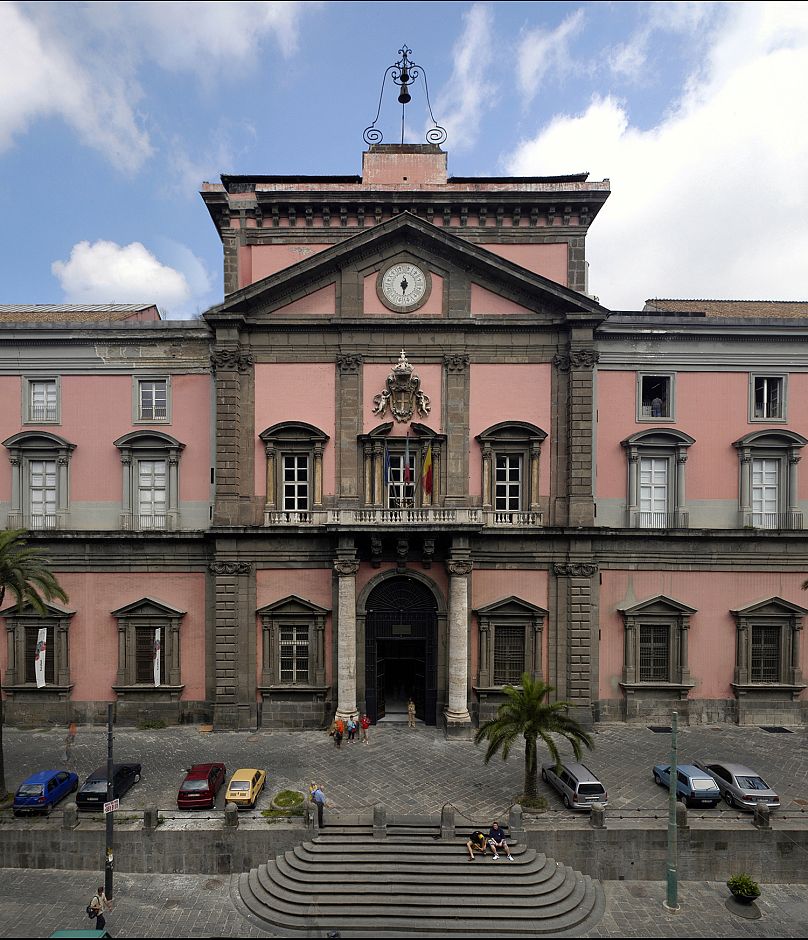Major new museum of previously unseen Pompeii exhibits to open in Naples in 2026
November 4, 2024 | In the PressFrom EuroNews (https://www.euronews.com/culture/2024/11/04/major-new-museum-of-previously-unseen-pompeii-exhibits-to-open-in-naples-in-2026)
A massive new museum space that will be dedicated to artefacts from Pompeii is under construction in Naples.
MANN 2 will be an expansion of the city’s Museo Archeologico Nazionale di Napoli (MANN), which houses the largest collection of classical archaeology in the world.
The new branch will be built in the Real Albergo dei Poveri, an unfinished 18th-century complex around 1.8 kilometres from MANN.
The Real Albergo has the longest building facade in Europe and will provide 10,000 m2 of exhibition space for MANN 2.
Italy’s Culture Ministry has earmarked €148 million for the project. It is scheduled to open to the public in 2026.
The new museum is part of a wider regeneration project to bring more tourism to the southern Italian city.
The largest collection of classical archaeology in the world
MANN, which opened in 1777, has struggled to present its vast collection to the public due to a lack of exhibition space and funding issues.
MANN 2 hopes to demonstrate to visitors the breadth of the museum’s assets.
Talking to The Art Newspaper, MANN director Paolo Giulierini described the new branch as “an epochal urban regeneration project that will leave its mark on Naples.”
Construction work has already begun on the Real Albergo dei Poveri, which was commissioned by Charles III of Bourbon, the first king of Naples.
The iconic building’s facade is 400 metres long and was built by architect Ferdinando Fuga in 1751.
Once used as a prison, the complex has been disused for years and fallen into a state of disrepair.
A new museum dedicated to Pompeii
MANN has the world’s largest collection of artefacts from Pompeii, an ancient city buried in volcanic ash when Mount Vesuvius erupted in 79 CE.
The museum holds around 40,000 findings from Pompeii including gold jewellery and a famous statue of the god Pan copulating with a goat.
Most of the items, however, remain in storage as the museum does not have sufficient exhibition space to display them.
MANN 2 will exhibit objects from the collection of Francesco Santangelo, an 18th-century aristocrat and politician from Naples who accrued Italy’s largest collection of artefacts from Pompeii and the surrounding area.
“In Palazzo Fuga we do not want to replicate a collection already well told in the MANN itself,” Massimo Osanna, Italy’s director of state museums, told press in February.
“Rather, we are going to create a space dedicated to the history of the rediscovery of the Vesuvian sites through artefacts, but also reconstructions, panels and multimedia support.”
Eruptions, excavations tunnels and reconstructed houses
The exhibition will begin with a digital reproduction of the eruption to show visitors how great an impact it had on the Campanian landscape.
“In the adjacent rooms, we will place actual eruptive materials like piles of lapilli, to highlight the second life of Pompeii, the hidden and underground one, that of the lootings,” Osanna added.
Visitors will then walk through a multimedia reconstruction of one of the first excavation tunnels. Entire buildings will be reconstructed in other rooms, including the House of the Citharist, the House of the Tragic Poet and the Temple of Isis.
The museum will also host exhibitions celebrating notable archaeologists including Giuseppe Fiorelli, Vittorio Spinazzola and Amedeo Maiuri.
Other areas of the vast space will be given over to teaching rooms, accommodation for the University of Naples Federico II and additional space for the city’s National Library.

 MANN 2 will be an expansion of the city’s Museo Archeologico Nazionale di Napoli (MANN), which houses the largest collection of classical archaeology in the world. MANN
MANN 2 will be an expansion of the city’s Museo Archeologico Nazionale di Napoli (MANN), which houses the largest collection of classical archaeology in the world. MANN MANN has the world’s largest collection of artefacts from Pompeii, an ancient city buried in volcanic ash when Mount Vesuvius erupted in 79 CE. D Jonez
MANN has the world’s largest collection of artefacts from Pompeii, an ancient city buried in volcanic ash when Mount Vesuvius erupted in 79 CE. D Jonez



